
AUCTION WEDNESDAY 4 DECEMBER 2024


AUCTION WEDNESDAY 4 DECEMBER 2024
IMPORTANT PAINTINGS FROM THE COLLECTIONS OF Vincent and Jacqueline O’Brien
The Hon. Francis D. Murnaghan Jr.

Vincent O’Brien was one of the greatest horse racing trainers in the history of the sport. His influence on the field of training and bloodstock was unparalleled and he, along with his wife Jacqueline have a legacy as one of the founding success stories of modern Ireland. Moving to Ballydoyle in 1951 they transformed what was an ordinary farm into a hugely successful stables establishing important relationships with owners in the early days, which extended to key figures in the horse racing industry when their success was becoming increasingly apparent.
A strong character with great confidence in his own ability, Vincent made unprecedented strides in the horse racing industry in Ireland. At a time when Ireland was seen as a place where horses were bought by English trainers, he made the novel and brave decision to train the horses here before bringing them over to England to race, and ultimately win, in venues such as Cheltenham. Under his tenure he won almost all the major horse races in Ireland and England, initially as a National Hunt trainer and later as the pioneer and supreme practitioner of flat racing. Amongst his many successes he trained six horses to win the Epsom Derby, won three Grand Nationals in succession and trained the Canadian-bred racehorse, Nijinsky, the only horse to date to win the English Triple Crown. He is the only trainer in British racing history to have been champion twice in both flat racing and in National Hunt racing.
Jacqueline was born in 1927 in Western Australia in Wittenoom, a town named after her own family. She visited Dublin following her graduation from university and on this trip she was introduced to Vincent who took her out racing the following day and before she returned to Australia they were engaged to be married. This partnership lasted nearly sixty years in which they built their family and business at Ballydoyle and Coolmore Stud. This curated selection from their collection is a clear expression of both of their aesthetic sensibilities and their shared appreciation for Irish art.
Jacqueline was an accomplished photographer and writer. Her career in photography started when she took over the role of photographing the horses at the farm in Ballydoyle ahead of the sales. She had an incredible collection of vintage cameras many of which she used on trips abroad. Amongst her highly successful books include the illustrated survey Ancient Ireland, Great Irish Houses and Castles and Dublin: A Grand Tour co-written with Desmond Guinness which traced the development of Dublin’s architectural and decorative styles. She was also the co-author with Ivor Herbert, of her husband’s biography Vincent O’Brien - The Official Biography (2006). Her interest in the painting and decorative arts is evident in her work. As a creative individual she was committed to her passions for photography and writing despite already having a full time job in the running of Ballydoyle. She lectured internationally on historical subjects and held photographic exhibitions in America and Europe.


Signed
€40,000-60,000
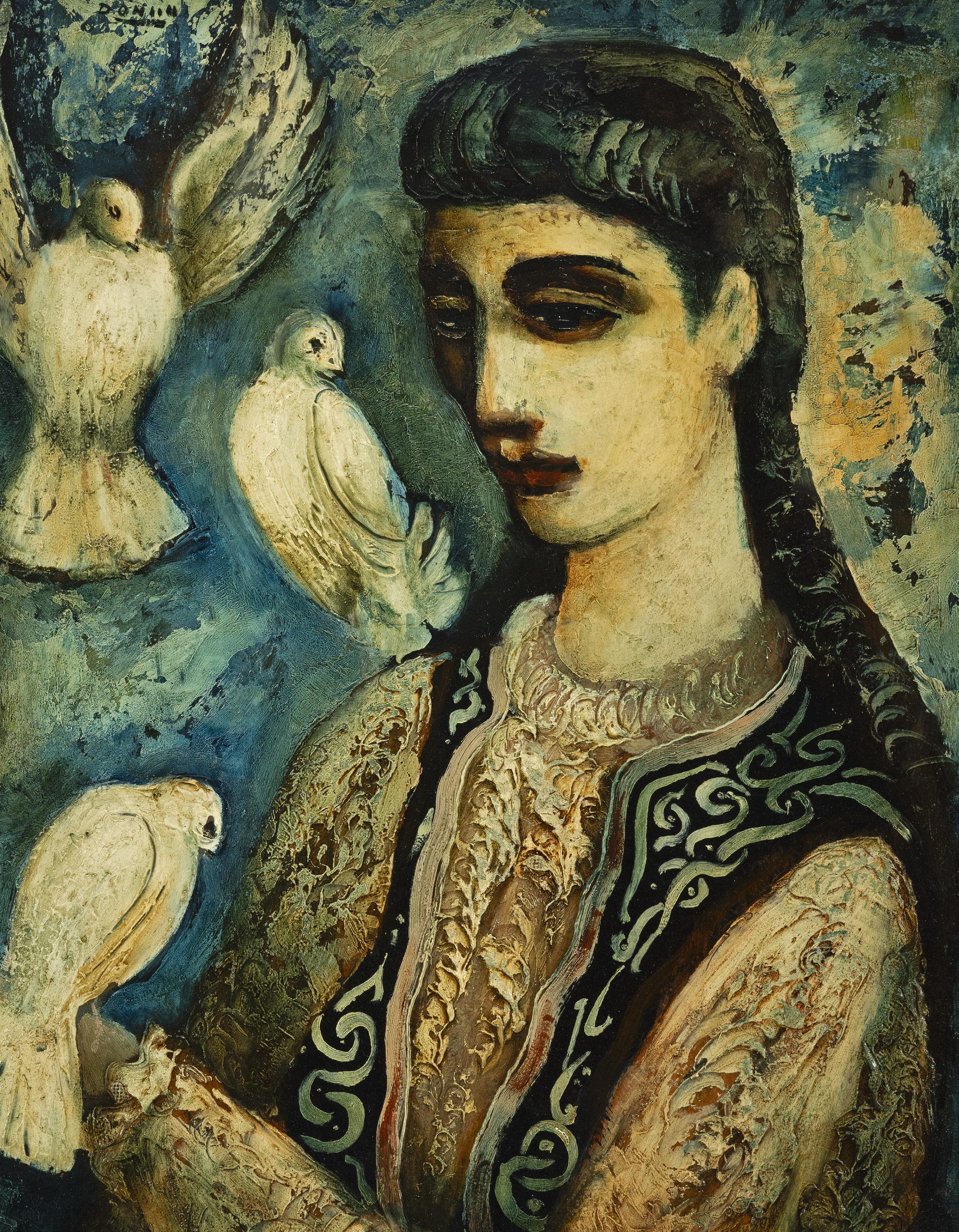
(1920 - 1974)

James O’Halloran BA FSCSI FRICS DIRECTOR j.ohalloran@adams.ie

Stuart Cole MSCSI MRICS MANAGING DIRECTOR s.cole@adams.ie

Nicholas Gore Grimes DIRECTOR nicholas@adams.ie

Amy McNamara BA MA ASSOCIATE DIRECTOR amymcnamara@adams.ie

Niamh Corcoran BA FINE ART DEPARTMENT niamh@adams.ie

Adam Pearson BA SALEROOM CURATOR a.pearson@adams.ie

Ronan Flanagan HDip WAREHOUSE MANAGER r.flanagan@adams.ie

Eamon O’Connor BA FINANCIAL DIRECTOR e.oconnor@adams.ie
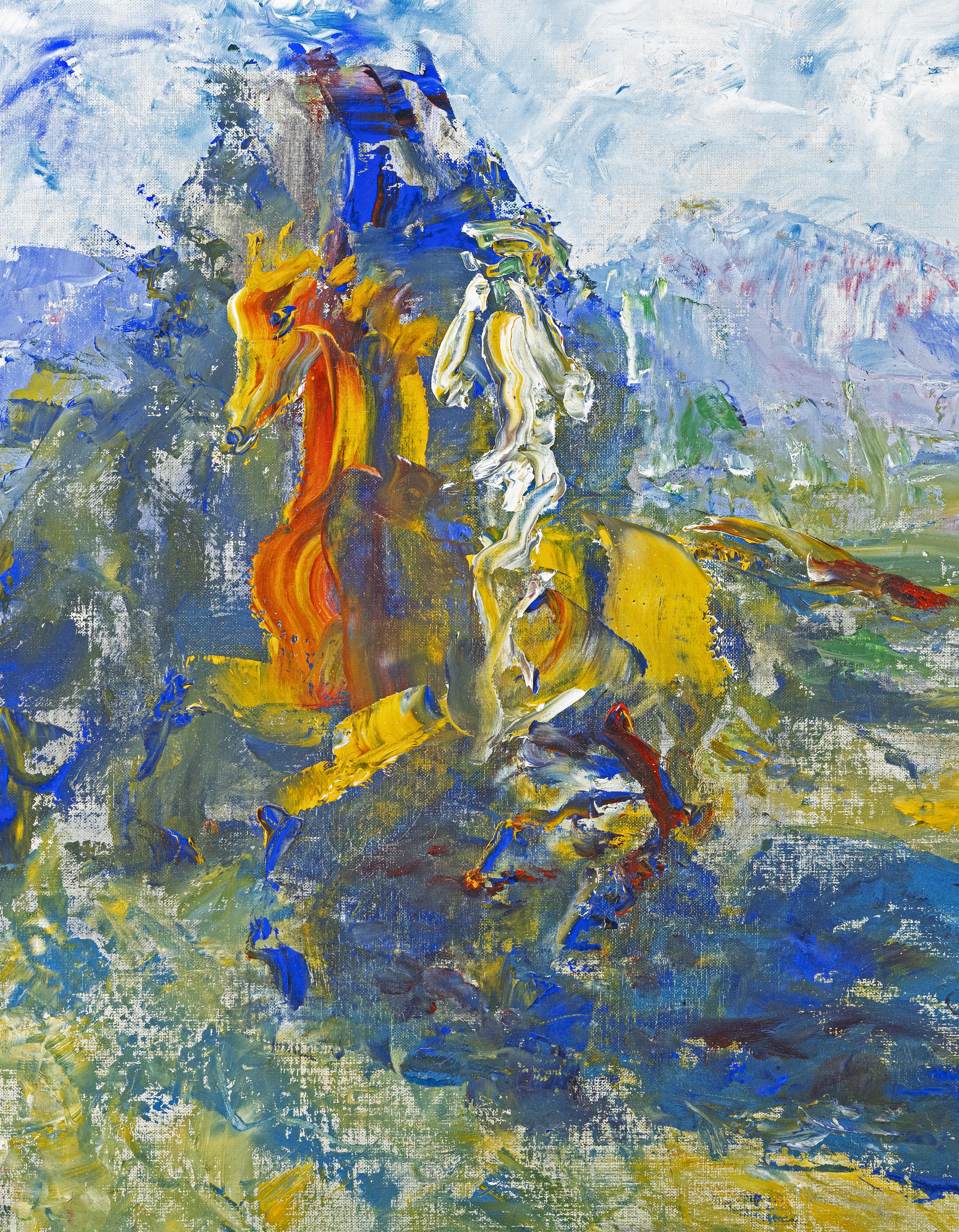
AUCTION
Wednesday 4th December 2024 at 6.00pm
26 St. Stephen’s Green, Dublin 2. Ireland , D02 X665 +353 (01)6760261 adams.ie FOLLOW US @Adams1887 #Adams.Auctioneers

ALL AUCTION VIEWINGS ARE FREE AND OPEN TO THE PUBLIC
Friday 29th November 10.00am–5:00pm
Saturday 30th November 1.00pm– 5.00pm
Sunday 1st December 1.00pm – 5.00pm
Monday 2nd December 10.00am–5:00pm
Tuesday 3rd December 10.00am–3:00pm
Wednesday 4th December 10.00am–4:00pm
Please refer to the Buying At Auction section in this catalogue, or adams.ie for further details on bidding in this auction, including absentee bidding.

26 St. Stephen’s Green, Dublin 2. Ireland +353 1 676 0261 info@adams.ie | www.adams.ie
London 18th – 20 th November
The Maas Gallery 6 Duke Street St James’s, London SW1Y 6BN,

Belfast 14th – 15th November
The Ava Gallery Clandeboye Estate, Bangor, Co. Down, BT19 1RN


James O’Halloran BA FSCSI FRICS DIRECTOR j.ohalloran@adams.ie

Stuart Cole MSCSI MRICS MANAGING DIRECTOR s.cole@adams.ie

Nicholas Gore Grimes DIRECTOR nicholas@adams.ie


26 St. Stephen’s Green, Dublin 2. Ireland +353 1 676 0261 info@adams.ie | www.adams.ie
Horsemen (1947)
Oil on canvas
46 x 61cm (18 x 24’’)
Signed
Provenance: Sold to R. McGonigal at the Victor Waddington Galleries exhibition in 1947; G. Marriott, London; with Victor Waddington; Collection Vincent and Jacqueline O’Brien, Ireland 1971, thence by descent.
Exhibited: Dublin, Victor Waddington Galleries, Paintings, 3-16 October,1947 cat. no.6; London, Victor Waddington Galleries, Paintings, 11 Feb - 13 Mar 1965, cat. no.20 (Illustrated); Dublin, National Gallery of Ireland, on loan from 2017 to 2024.
Literature: Hilary Pyle, Jack B. Yeats, A Catalogue Raisonné of the Oil Paintings, Andre Deutsch, London, 1992, cat.no.834, p.752 (illustrated)
ESTIMATE €500,000 - 800,000

He Reads a Book (1952)
Oil on canvas
46 x 61cm (18 x 24”)
Signed
Provenance: Sold by the artist to Victor Waddington Galleries, December 1956; Collection Vincent and Jacqueline O’Brien, Ireland 1971, thence by descent.
Exhibited: London, Wildenstein, Recent Paintings, 4 – 28 March 1953, cat.no.15; Dublin, Victor Waddington Galleries, Oil Paintings, October 1953, cat.no.4; Dublin, Municipal Gallery, An Tóstal: Irish Painting 1903 – 1953, April – July, 1953, cat.no.3; Belfast, Museum and Art Gallery, Paintings, (organised by CEMA, the Council for Encouragement of Music and the Arts), February – March, 1956, cat. no.38; Dublin, National Gallery of Ireland, on loan from 2017 to 2024.
Literature: Hilary Pyle, Jack B. Yeats, A Catalogue Raisonné of the Oil Paintings, Andre Deutsch, London, 1992, cat.no. 1111, p.1013 (illus)
ESTIMATE: €500,000 - 700,000

SIR WILLIAM ORPEN, RA RHA (1878-1931)
Old John’s Cottage, Connemara
Oil on canvas
91.5 x 96.5cm (36 x 38”)
Signed and dated 1908
Painting of Seán & Máire Geoghegan in Co. Mayo after their daughter’s farewell party - known as an ‘American Wake’ because the parents knew it was probably the last time they would ever see their child.
Provenance: Collection of Mrs St George, 1908, who purchased it for £200; With Pym’s Gallery, London; Collection Vincent and Jacqueline O’Brien, Ireland 1971, thence by descent.
Exhibited: Dublin, National Gallery of Ireland, on loan from 2017 to 2024.
Literature: Arnold, Bruce, Orpen Mirror to an Age, Jonathan Cape, London, 1981, p.239 - “The other painting mentioned in the first and innocent letter from Screebe Lodge is ‘Old John’s Cottage, Connemara’. Orpen promises a sketch of it ‘as soon as I have absolutely fixed the composition’. It turned out eventually to be a wonderful composition showing the interior of a west of Ireland cottage with two figures seated on either side of an open fireplace, and it was also bought by Mrs St George in the autumn of 1908 for £200. It is illustrated in ‘Stories’ and is the only interior portrait group Orpen painted of Irish peasants.”
ESTIMATE €300,000 - 500,000
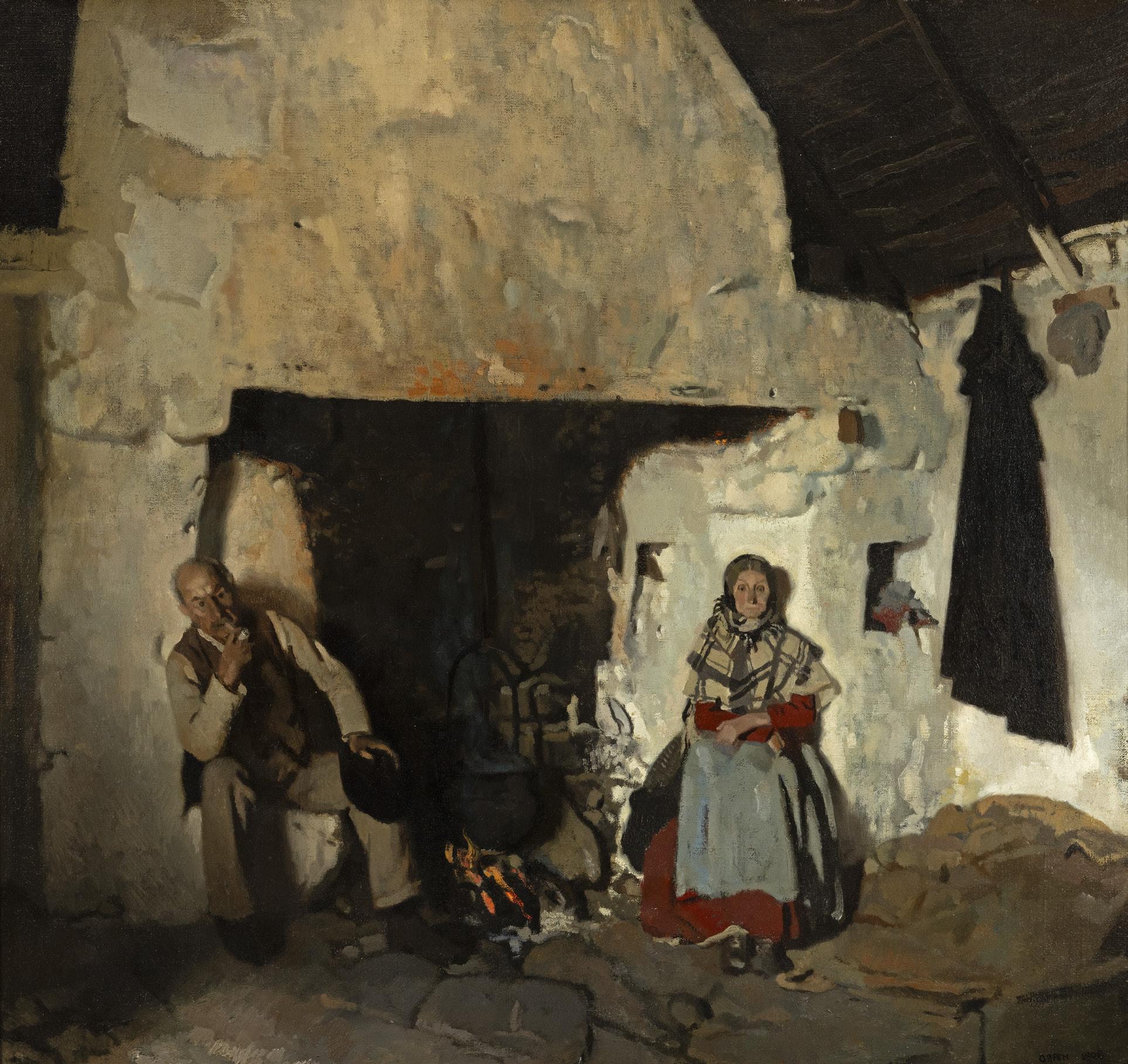
Willie Reilly (1902)
Oil on canvas laid on board 61 x 47cm (24 x 18”)
Signed
Provenance: Sold in 1902 to John Quinn; his sale, American Art Galleries (New York), 10 February 1927, lot 236, bought by Ernest Boyd; with Victor Waddington Galleries, Dublin; with Dawson Gallery, Dublin; Collection Vincent and Jacqueline O’Brien, Ireland 1971, thence by descent.
Exhibited: Dublin, Wells Central Hall, Sketches of Life in the West of Ireland, 18 – 30 August, 1902, cat.no.23; Dublin, National Gallery of Ireland, on loan from 2017 to 2024.
Literature: Hilary Pyle, Jack B. Yeats, A Catalogue Raisonné of the Oil Paintings, Andre Deutsch, London, 1992, cat.no.3, p.4; John Quinn 1870 – 1925: collection of paintings, watercolours and sculpture (1926), repro p.159 as The Singing Actor.
ESTIMATE €150,000 - 200,000

The Window with a View of the Town (1951)
Oil on canvas 51 x 68.5cm (20 x 27”)
Signed
Provenance: Sold to Mrs Mabel Spiro at the exhibition in 1951; Collection Vincent and Jacqueline O’Brien, Ireland 1971, thence by descent.
Exhibited: Dublin, Victor Waddington Galleries, Paintings, October 1951 cat.no.4; Belfast, Museum and Art Gallery, Paintings, (organised by CEMA, the Council for Encouragement of Music and the Arts), February – March, 1956, cat.no.15; Dublin, National Gallery of Ireland, on loan from 2017 to 2024.
Literature: Hilary Pyle, Jack B. Yeats, A Catalogue Raisonné of the Oil Paintings, Andre Deutsch, London, 1992, cat. no. 1080, p.984 (illustrated)
ESTIMATE: €300,000 - 500,000
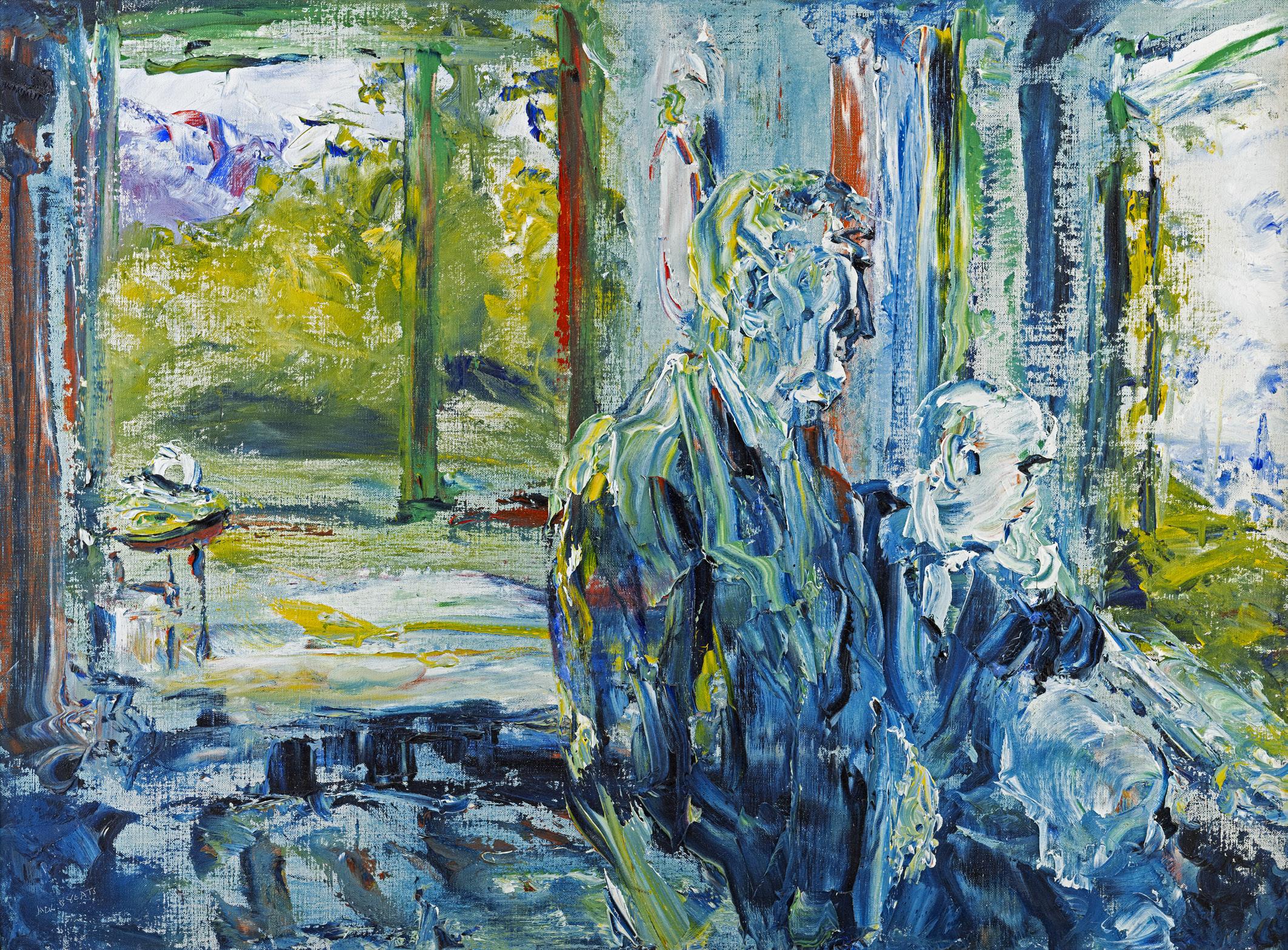
States of Being (2000)
Triptych, oil on canvas, 116 x 251cm (451/2 x 99”)
Signed Numbered 731 in the artist’s oeuvre
Provenance: with Gimple Fils, Davies Street, London, where purchased by the present owners; Private Collection, Ireland.
ESTIMATE: €100,000 - 150,000


A distinguished figure in American legal history, Judge Francis D. Murnaghan Jr. served as a United States Circuit Judge for the Fourth Circuit Court of Appeals for over two decades, following his appointment by President Jimmy Carter in 1979. His career was a testament to public service, from his early days as a lieutenant in the U.S. Naval Reserve during World War II, through his legal practice in both Philadelphia and Baltimore, and his various government roles, including with the U.S. Department of State. Educated at Johns Hopkins University and Harvard Law School, Murnaghan's intellectual rigor and dedication marked him as one of the leading legal minds of his generation.
But beyond the courtroom, Murnaghan was a man of deep and diverse passions. A lover of the arts, and in particular Irish painting, Murnaghan began collecting works around 1970, steadily amassing a collection that reflected both his discerning taste and his dedication to preserving the cultural heritage of Ireland. His collecting journey, which he once referred to as a "wall-devouring entity," was pursued with the same tenacity and insight that defined his legal career.
In correspondence, Murnaghan expressed his love for both the old and the new, yet confessed to being drawn particularly to more traditional forms of expression. He cherished works by Northern Irish artists, such as Andrew Nicholl and James Humbert Craig, and delighted in collecting pieces by major figures such as Roderic O’Conor, Nathaniel Hone and Leo Whelan among many others. His collection became a vivid testament to the broad spectrum of Irish artistic talent, curated with an eye for both historical significance and personal resonance.
Today, we are privileged to offer a selection from Judge Murnaghan’s exceptional collection, a tangible reflection of his refined tastes and enduring love for Irish art. It is our hope that these works, which once graced his home, will find new admirers and continue to be treasured as he did.

WILLIAM ASHFORD (1746 - 1824)
Figures by the Temple in the Park at Mount Merrion, Co Dublin with Dublin and Dublin Bay in the background
Oil on canvas, 91.5 x 128.2cm (36 x 50½’’)
Provenance:
Sale, Christie’s 17 April 1964 (lot 46); Collection of Desmond Guinness; his sale, Christie’s 15 July 1983 (lot 25) where purchased by Judge Murnaghan.
Literature:
Edward Malins and the Knight of Glin, Lost Demesnes, Irish Landscape Gardening 1660-1845 (London. 1976) p. 105, fig 116.
ESTIMATE: €80,000 - 120,000
Situated on an elevated site to the southeast of Dublin, Mount Merrion, the suburban retreat of the Viscounts Fitzwilliam, was a comparatively small demesne but it overlooked the 2,700 acre estate of the family which stretched from Merrion Square to Bray. Between 1804 and 1806 Ashford painted for the Fitzwilliams what has been termed his ‘last great commission of estate views’ (O’Kane, op. cit.), a series of oils and an album of twenty-four drawings. Ashford’s patron, the 7th Viscount Fitzwilliam (1745-1816), was described by a contemporary as a ‘great encourager of the Fine Arts [who] was very liberal to those whose merits be appreciated’, among whom was the miniaturist Horace Hone, in whose London house the viscount lodged, and Ashford himself who was on friendly, as much as professional, terms with his patron. At his English home near Windsor, Fitzwilliam assembled ‘a magnificent library of book, prints, and other productions connected with the fine arts’. A somewhat idiosyncratic member of the Irish House of Lords with ‘a more complex life than is initially apparent’ (ibid.), he did not marry but had three children with the French dancer Mademoiselle Zacharie and, rather more unusually, had, it has been suggested crypto-Catholic leanings. Fitzwilliam was himself an accomplished artist and founder of the museum in Cambridge which bears his name to which he bequeathed six of Ashford’s oil paintings of Mount Merrion in addition to the album of drawings. At least one further example from the series is preserved at Wilton, in Wiltshire, home to the Earls of Pembroke who inherited the Fitzwilliam estate from the 7th Viscount.
Here Ashford paints a summerhouse or teahouse in the form of a classical temple cited to avail of the spectacular views that Mount Merrion afforded. The painting is close in general composition to one of the set in the Fitzwilliam Museum though with numerous differences in the charmingly configured figures and animals which animate the foreground which is further enlivened by the dappled fall of sunlight. The view of Dublin in the distance is captured with great dexterity and it was for this view that Mount Merrion was famed. In November 1761 George Montague wrote to Horace Walpole on the view from this spot, and seems to have been one of the earliest to make what would become a very hackneyed comparison: ‘Nothing near Naples can be more beautiful, with such a view of the sea…as would make your Thames blush for Richmond Hill and Isleworth… such ships, such mountains, such as [the] hill of Hothe [sic] as makes one not wish for any other embellishments’. Ashford was a resident of the area overlooked by Mount Merrion. In, or about, 1782 he had moved from College Green in the city centre to Sandymount (‘a residence more suitable to the habits and taste of a landscape painter’) and commissioned his friend, the great architect James Gandon, to build a villa on a plot leased from Fitzwilliam. Finola O’Kane characterizes the Mount Merrion commission as ‘among the most significant of all the demesne landscape series in the Irish tradition, deftly describing Dublin’s late Georgian landscape at a time when it was veering to the east and moving inexorably towards the sea’.
William Ashford was born in Birmingham and christened in St Martin’s parish church on 20 May 1746. At the age of about eighteen, however, he moved to Ireland, taking the position of clerk to the comptroller of the laboratory section of the Ordnance Office in Dublin Castle, which he held until 1788. Apart from occasional visits to England and Wales, it was in Ireland that Ashford spent his lifetime. He became Dublin’s most successful landscape painter of the late eighteenth and early nineteenth centuries, succeeding Thomas Roberts who died prematurely in 1777.
In 1767, aged twenty-one, Ashford submitted his first works to the Society of Artists in Ireland, an organisation of artists who had constructed an octagonal exhibition room for annual displays in William Street, a move which galvanized art production in Ireland. Ashford’s early exhibits were not in the landscape genre for which he is almost exclusively known today. Instead he showed two still-lifes, both titled A Group of Flowers. A work of this title, dated 1766, survives in the National Gallery of Ireland and is likely to be one of these exhibits. Over the following years Ashford exhibited subjects including dead game, fruit and A Trout from Nature. It was only in 1772 that landscapes, both topographical and demesne, appeared in the exhibitions and hereafter Ashford spent his entire long career painting the Irish landscape in all its manifestations.
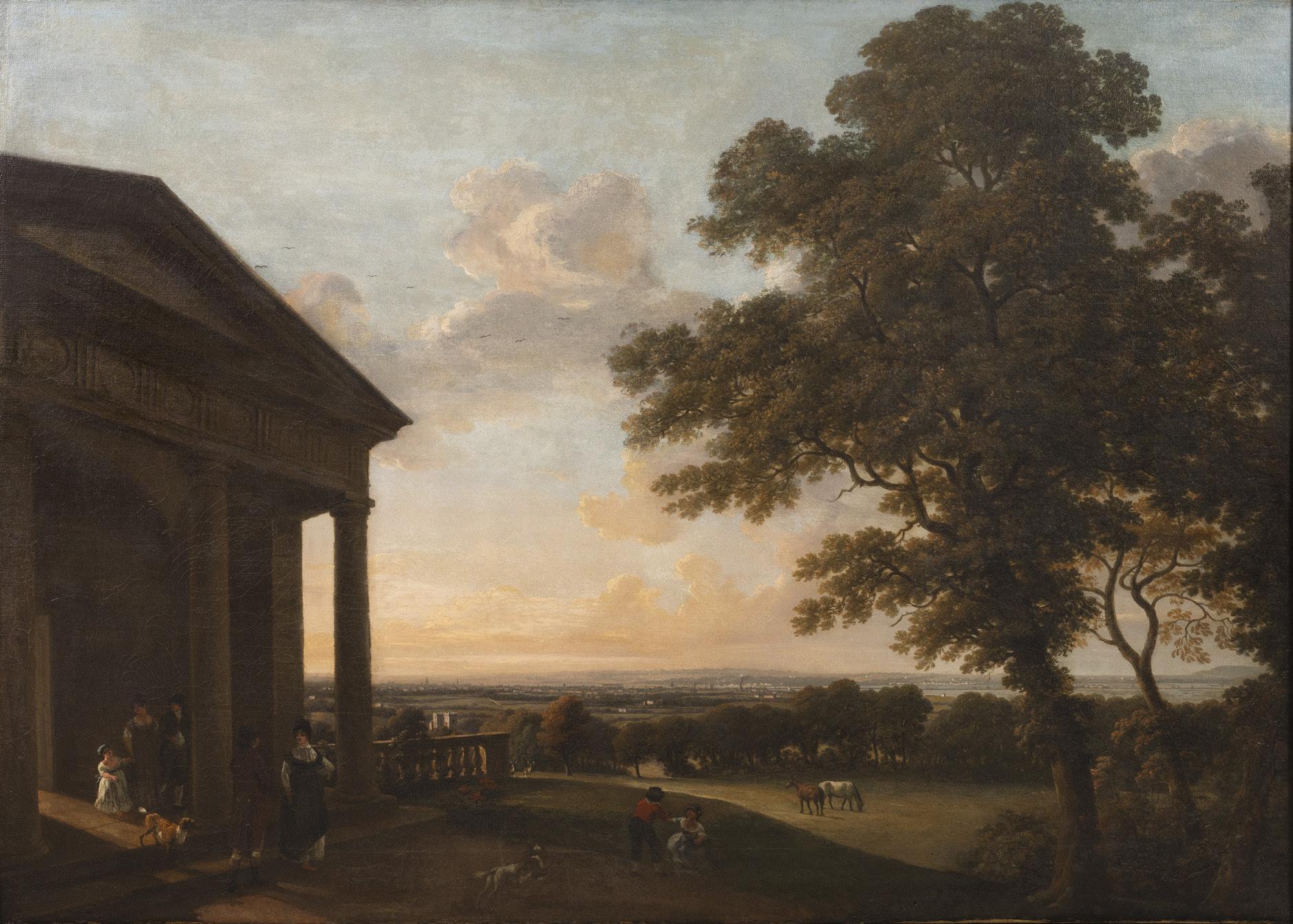
On Roberts’s death in Lisbon, where he had sought respite for the consumption which afflicted him, Ashford completed his rival’s great set of views of Carton, County Kildare, with two rather different pictures. Clearly in favour with the ducal Fitzgeralds, he won another important early commission for a pair of views of their ancestral home at Maynooth Castle which he exhibited in William Street in 1780. Ashford also contributed to Thomas Milton’s engraved views of Irish seats including portrayals of Belan, County Kildare (1783), Bessborough, County Kilkenny (1785) and Ballyfin, County Laois (1787). In the years after 1780 Ashford’s style broadens somewhat and when a group of his works was offered for sale in 1794, his stylistic progression could be assumed as public knowledge with the advertisement referring to ‘two landscapes in his first style’.
Ashford continued to produce exceptional work in the following decades, noticeably the Charleville Forest series of 1801, which illustrates a full understanding of Picturesque theory as it had been codified by William Gilpin (1724-1804) and others in the previous decades.
When the Charleville pictures were exhibited in the former Parliament House on College Green in 1801 an anonymous diarist was full of praise: ‘There is here abundant scope for an exertion of the artist’s genius in the delineation of foliage. The articulation is perfect and the colouring so beautifully rich, and various, that I could with pleasure have spent hours in viewing them’. In addition to demesne landscapes and topographical views, notable among them a magnificent pair showing Dublin Bay looking north and south (Adam’s, 1 June 2022), Ashford painted a few landscapes with literary narratives, such as Jacques Contemplating the Wounded Stag, a subject taken from Shakespeare’s As You Like It (private collection). One of his most famous works, selected for the cover of Anne Crookshank and the Knight of Glin’s The Painters of Ireland (1978), shows tourists in search of the antiquarian picturesque exploring the ruins of Cloghoughter Castle, County Cavan. Over the course of his long life, Ashford grew rich and painted less, but increasingly became one of the key cultural figures in Dublin in the early decades of the nineteenth century. Already in 1801 the anonymous diarist described him as ‘decidedly the first landscape painter’, and it is difficult to cavil at Strickland’s assessment that his ‘pictures justify the reputation he enjoyed as the foremost landscape painter of his time in Ireland’.
A Landscape with a Ruined Bridge and a River in Spate
Oil on canvas 29.2 x 62.2 cm (111/2 x 241/2“)
Provenance: The Godolphin Gallery, Dublin; Solomon Gallery, Dublin; Grace Pym, Dublin, May 1984; Collection of Hon. Francis D. Murnaghan Jr.
Exhibited: Possibly, Society of Artists in Ireland, William Street, Dublin, ‘A Landstorm, with a Waterfall’ (no. 62); Dublin, National Gallery of Ireland, James Arthur O’Connor, 1985, cat.no. 7; Boston, McMullen Museum of Art, ÉIRE/LAND (2003), cat. no. 21;
Literature: John Hutchinson, James Arthur O’Connor (Dublin, 1985) p. 40; Vera Kreilkamp (ed.), ÉIRE/LAND (Boston, 2003) p.163; George Breeze, Society of Artists in Ireland, Index of exhibits, 1765-1780 (Dublin, 1985) p. 47, no. 9; William Laffan and Brendan Rooney, ‘Thomas Roberts, Landscape and Patronage in Eighteenth-Century Ireland’ (Tralee, 2009) p. 324, no. 7
ESTIMATE: €30,000 - 50,000
Storm scenes were something of a staple among Roberts’s contemporaries, the sub-genre ultimately owing its popularity to the art of Gaspard Dughet. In the Society of Artists in Dublin, Robert Carver and James Forrester had both exhibited works entitled Landstorm while, in 1769, the Dublin public had the opportunity to compare works in the genre by Roberts and two of his teachers, James Mannin and George Mullins. It has been plausibly suggested (Breeze, op. cit.) that Roberts’s 1769 exhibit, entitled Landstorm with a Waterfall, is identifiable with the present work. A river in spate flows through a bridge, one of the arches of which has been broken by the flood. Beneath a distinctly classical structure, itself ruined and overgrown, two figures in blue and red strike dramatic poses. The landscape is unusual within Roberts’s oeuvre in introducing a tragic note in these travellers who rail against the elements, rather than merely struggle through them. If this dating is correct, the painting coincides with Roberts’s breakthrough 1769 showing at the William Street exhibition room. In this year he moved from his master, Mullins’s, tavern, The Horseshoe and Magpie, in Temple Bar, to his own lodgings off Dame Street. Other exhibits that year included his masterpiece, the Frost Piece, and his View of Rathfarnham Castle.
This is one of a series of storm scenes painted by Roberts, including A Sea Storm (National Gallery of Ireland), probably the picture he exhibited in Dublin in 1771 and something of an imitation of the style of Vernet, who had been patronised by at least three of Roberts’s Irish patrons, the Earls of Leeson and Charlemont, and Richard Dawson, and, in the mid1770s, a series of variations on the ‘landstorm with travellers’ theme, initiated in one of the upright landscape he painted for Sir Watkin Williams-Wynn’s town house in St James’s Square.
Here in the insignificant powerlessness of man in the face of the hostile forces of natures, Roberts touches, more closely than usual, on theories of the Sublime as articulated by Edmund Burke (1729-97) or David Hartley (1705-57): ‘If there be a precipice, a cataract, a mountain .. in one part of the scene, the nascent ideas of fear and horror may magnify and enliven all the other ideas, and by degrees pass into pleasures, by suggesting the security from pain’. This, more romantic, approach to landscape painting was to be the element in Roberts’s art that his brother Sautelle would take further.
We are grateful to William Laffan and Brendan Rooney for their assistance in cataloguing this lot.


The Dargle
Oil on canvas, 34.9 x 42.5cm (13¾ x 16¾’’)
Signed and dated 1831 (lower right)
Provenance: The Collection of Francis D. Murnaghan Jr.
ESTIMATE: €4,000 - 6,000

Go to www.adams.ie. Choose the auction you wish to view from the Auctions/Forthcoming auctions menu, and you will be offered a range of ways to view. You may choose to view a digital version of the printed catalogue in the view e catalogue option or explore the virtual 3D option which allows you explore the saleroom with easy to navigate options or view the list view which opens automatically. This last option provides additional information and photographs of each lot as you choose the View Details button. Lastly, and only during office hours, there is a live chat button onscreen. If at any time you have a question whilst you are online, you can open a live chat and one our staff can help you.


Log on to our web site www.adams.ie and create an account by signing up and registering your particulars online. The process involves supplying valid credit card information. This is a once off request for security purposes, and once the account is activated you will not be asked for this information again. The card information supplied is securely stored by Sage Pay. You can leave absentee bids online, and add, edit or amend bids accordingly as well as bidding over the internet in real time through ‘Adam’s Live’. You can also view your invoices, bid history, wish lists & other useful functions including paying your invoice and creating you very own personalised catalogue with search tags that will notify you once a catalogue is uploaded for your key word search.
We are delighted to advise that our own on-line bidding platform, Adam’s Live, is now fully operational for those who wish to bid online and watch the auction as it happens.
On the Live platform you can arrange to bid as the auction is taking place or at any time leave comission bids and the Adam’s Live platform will bid on your behalf.
Bidding through this portal will attract no additional internet surcharge for lots purchased so in effect those bidders will pay the same as a room bidder. Online bidding through the-saleroom.com and invaluable.com remains unaffected.
Sign up today for your own My Adam’s account and start saving on your on-line purchases.
These are shown below each lot in this sale. All amounts shown are in Euro. The figures shown are provided merely as a guide to prospective purchasers. They are approximate prices which are expected, are not definitive and are subject to revision. Reserves, if any, will not be any higher than the lower estimate.
All purchases must be paid for no later than Friday 6th December 2024. Please contact a member of staff to arrange collection/delivery of your purchases. Auctioneers commission on purchases is charged at the rate of 25% (inclusive of VAT). Terms: Strictly cash, card, bankers draft or cheque drawn on an Irish bank. Cheques will take a minimum of eight workings days to clear the bank, unless they have been vouched to our satisfaction prior to the sale, or you have a previous cheque payment history with Adam’s. We also accept payment by credit and debit card (Visa & MasterCard only). For payments by bank transfer please ensure all bank charges are paid in addition to the invoice total, in order to avoid delays in the release of items. Goods will only be released upon clearance through the bank of all monies due.
Artists Resale Rights (Droit de Suite) is not payable by purchasers.
It is up to the bidder to satisfy themselves prior to buying as to the condition of a lot. In relation to Condition Reports, whilst we make certain observations on the lot, which are intended to be as helpful as possible, references in the condition report to damage or restoration are for guidance. The absence of such a reference does not imply that an item is free from defects or restoration, nor does a reference to particular defects imply the absence of any others. The condition report is an expression of opinion only and must not be treated as a statement of fact. Please ensure that condition report requests are submitted before 12 noon on Tuesday 3rd December 2024 as we cannot guarantee that they will be dealt with after this time.
We are happy to execute absentee or written bids for bidders who are unable to attend or bid online themselves and can also arrange for bidding to be conducted by telephone. However, these services are subject to special conditions (see conditions of sale in this catalogue). All arrangements for absentee and telephone bidding must be made before 5pm on the day prior to sale. Bidding by telephone may be booked on all lots. Early booking is advisable as availability of lines cannot be guaranteed.
3. VAT Regulations
All lots are sold within the auctioneers VAT margin scheme. Revenue regulations require that the buyer’s premium must be invoiced at a rate which is inclusive of VAT. This is not recoverable by any VAT registered buyer.
Lots marked * are to be sold whilst subject to Temporary Admission (Import) regulations. For purchasers based in the Republic of Ireland - the hammer price will be subject to import VAT at the reduced rate, currently 13.5%, and the Buyer’s Premium will be subject to VAT at the standard rate, currently 23%. For purchasers outside of the Republic of Ireland, please contact our Accounts Department for further details.
We would like to acknowledge, with thanks, the assistance of Dr Roisin Kennedy, Mary Stratton Ryan, Aidan Dunne, Dickon Hall, Marianne O’Kane Boal, Niamh Corcoran, Dr Eimear O’Connor, and Hilary Pyle in the preparation of this catalogue.
7 ALL LOTS ARE BEING SOLD UNDER THE CONDITIONS OF SALE AS PRINTED IN THIS CATALOGUE AND ON DISPLAY IN OUR SALEROOMS AND ON OUR WEBSITE.
Auction Tuesday 5 November 2024

Thomas Carter (c. 1682-1763) and his wife Mary, née Claxton
Thomas Carter, Member of Parliament and Master of the Rolls, was married to Mary, née Claxton, the first cousin of Edward Lovett Pearce, the great architect of Dublin’s Parliament House and Bellamont Forest, the Palladian gem in County Cavan. The townhouse that Pearce designed for the couple, 9 Henrietta Street, has been described as ‘perhaps the most palatial residence’ on the famous street with one of the most impressive stair halls in Dublin. The portrait of Thomas, who acted as executor of the artist’s will, is signed and dated 1734, and inscribed as having been painted in Dublin, and further inscribed by Jervas ‘amicitiae ergo’ for the sake of friendship.
€60,000 – 80,000
Contact: Stuart Cole
s.cole@adams.ie
+353 (0)1 676 0261
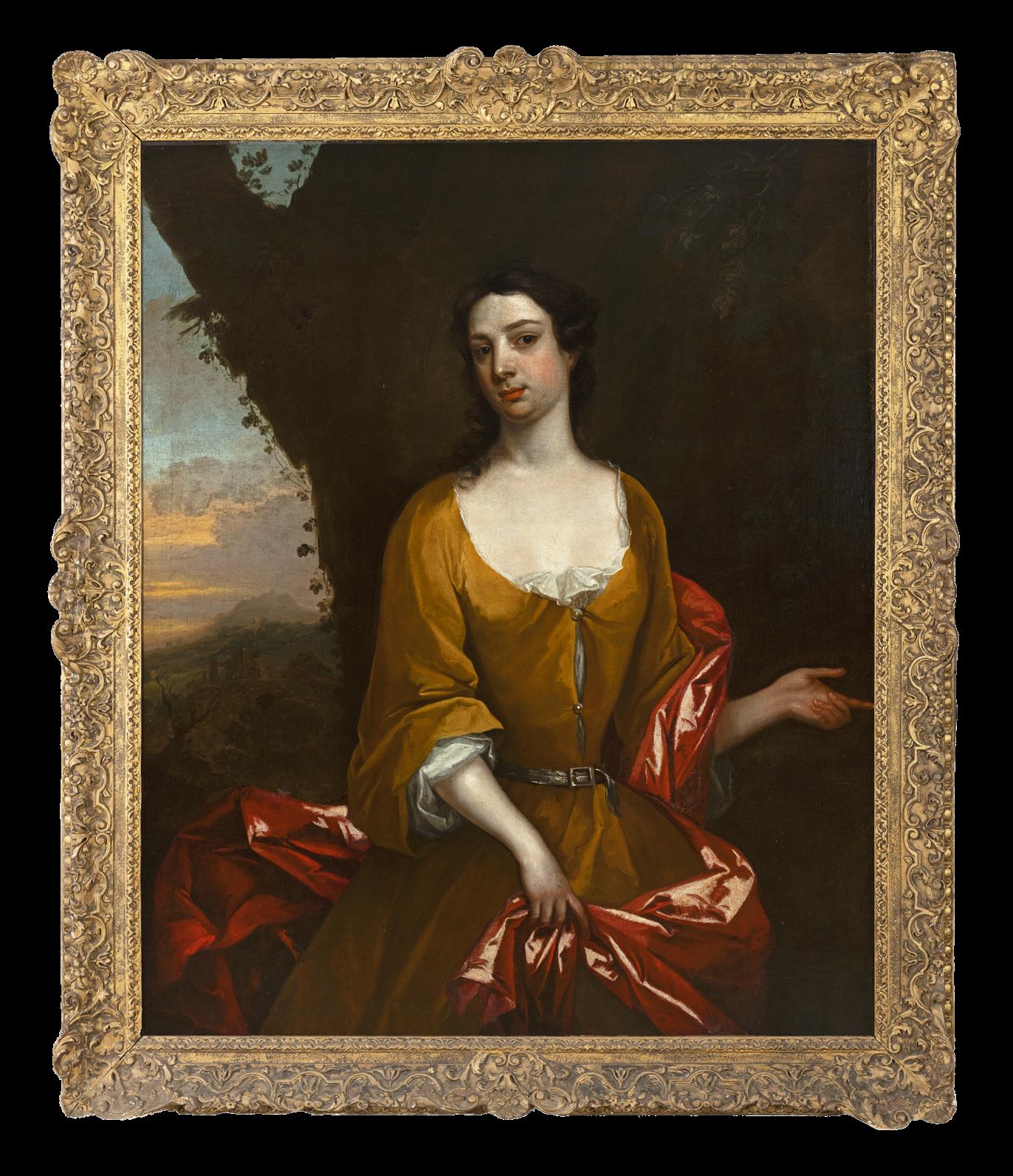
Auction Tuesday 18th November 2024


Ireland’s Premier Jewellery Auctioneers

“An Irish Connection to An International Market” FINE JEWELLERY &
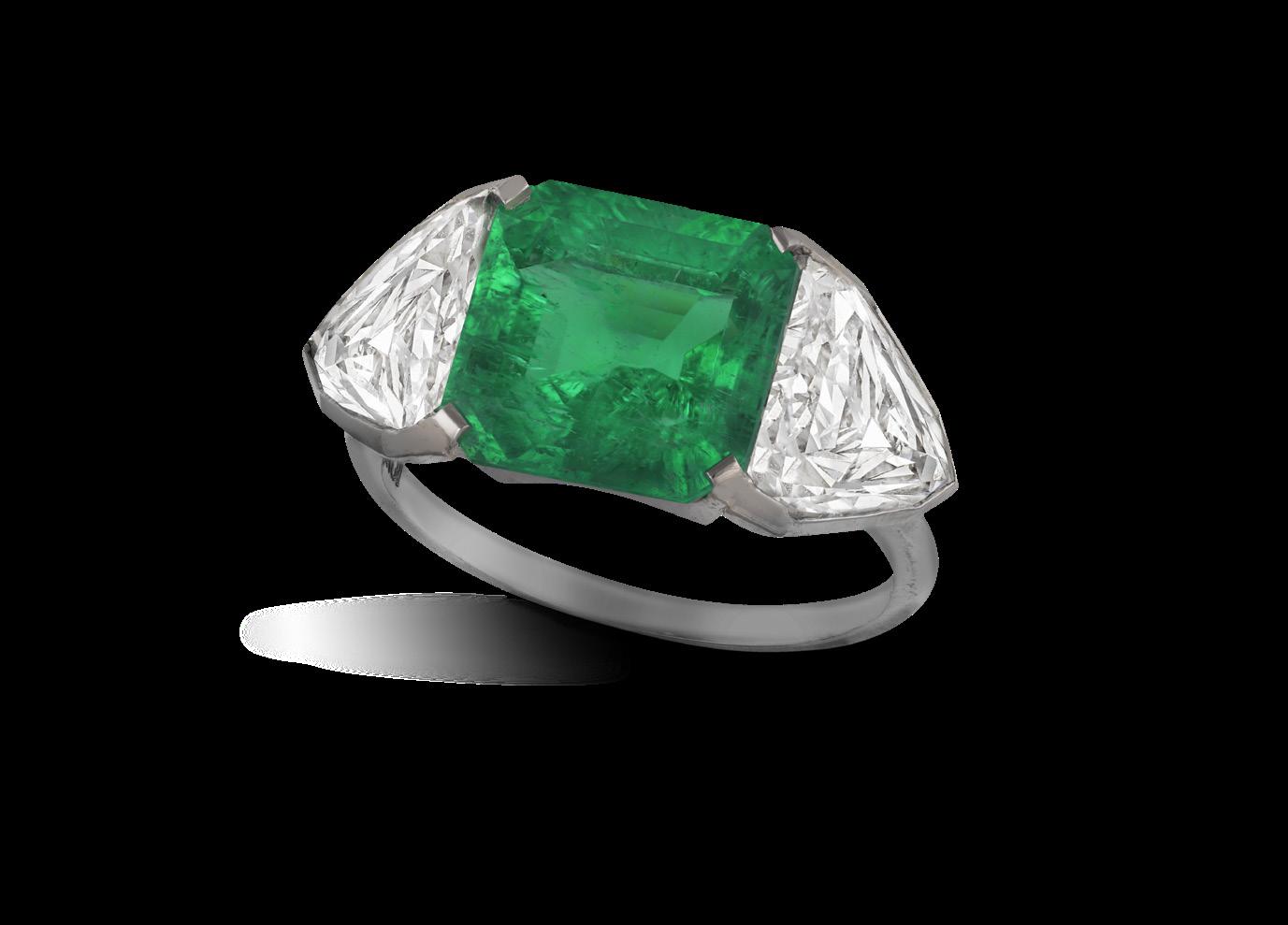
Auction Tuesday 3rd December 2024 Invitation to consign
For a confidential and complimentary appointment: Claire Mestrallet (jewellery@adams.ie) (Deadline to consign, 4th November 2024)
26 St. Stephen’s Green, Dublin 2. Ireland +353 1 676 0261 - jewellery@adams.ie

Auction Wednesday 4th December 2024

Colin Middleton RHA RUA (1910 - 1983)
Threshold: Monserrat 2
Oil on board, 60 x 60cm (23½ x 23½’’), signed
Provenance: with David Hendriks Gallery, label verso
€20,000 – 30,000
For informed, professional and friendly advice contact James O’Halloran j.ohalloran@adams.ie or Nicholas Gore-Grimes nicholas@adams.ie
Auction Thursday 5th December 2024

A Heuer Triple Calendar Chronograph Wristwatch, Salmon Dial. Circa 1950
€4,000 - 8,000
Deadline for consignment: Friday 28 October
Contact: Ken Israel
ken@adams.ie +353 (0)1 676 0261